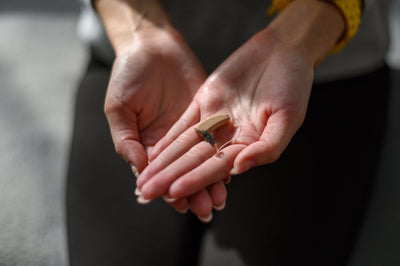Hearing Loss in Children: What You Need To Know
If your child has been diagnosed with hearing loss, then a pair of hearing aids can be vital to their spoken language development and educational success. Find out what kinds of hearing aids work best for children.
What Are Pediatric Hearing Aids?
Pediatric hearing aids are small, low-power devices that amplify sound in the frequency range of human speech. They are designed to fit a small ear. The smallest hearing aids are not much larger than a dime. They are usually worn on the pinna or the outer part of the ear. The sound is amplified by a small amplifier fitted behind the ear on the body.
How Do Pediatric Hearing Aids Work?
All hearing aids work the same way. Sound enters the hearing aid through the microphone, which picks up the sound and sends it through the amplifier to make the sound louder.
The amplified sound is then sent to the receiver, which changes the sound into electrical signals and sends them through the transmission wire to the earmold or speaker. The speaker then changes the electrical signals back into sound, sent to the ear.
What Pediatric Hearing Aid Features Are Important?
Today's hearing aids have many features, and it can be confusing to know which features are most critical to your child's hearing and speech development. Here's what you need to know.
- Volume Control: Many parents worry that their children will be distracted by hearing too much sound. However, the opposite is true. It is good for your child to hear all the sounds because this helps him learn to filter out unnecessary sounds and focus on important speech sounds.
- Sound Processing: Some hearing aids have settings to reduce background noise, which helps your child hear speech better. Some hearing aids can amplify the sounds of a single voice in the background.
- Multi-Programming: Most pediatric hearing aids can be programmed for different programs in different settings, such as school, home, and church. You can program the hearing aid for listening in a classroom, reduce background noise, and then program it for a noisy restaurant.
- Memory: Some hearing aids can be programmed directly from the microphone, so your child can change settings with a touch of a button.
What Are the Benefits of Pediatric Hearing Aids?
Children who use hearing aids can more easily hear speech sounds and can better recognize the meaning of words. Their ability to follow the auditory cues of speech improves. These cues are important to the development of spoken language. Speech-language professionals recommend that children from birth through age three wear hearing aids during waking hours to help them develop spoken language skills.
Children with hearing loss can benefit from early intervention, including access to a speech therapist and whether they wear hearing aids. Most children benefit more from speech therapy than hearing aids. With early intervention, children will learn how to hear and use their hearing in everyday life.
Conclusion
If your child is being fitted for a hearing aid, make sure you understand how it works and how to use it. Your audiologist can show you how to program the hearing aid for different settings. Ask about hearing aid features that are important for your child.
At last, affordable and discreet hearing aids are now available. Here at HearGlow, we aim to make hearing aids more accessible for the many millions around the world who are losing their hearing. We have come on the scene to help reduce those costs, by making hearing devices more affordable & accessible for the many millions around the world who are losing their hearing. If you need hearing aid accessories in Oregon, we’ve got you covered! Check what we have to offer!
Related Articles



